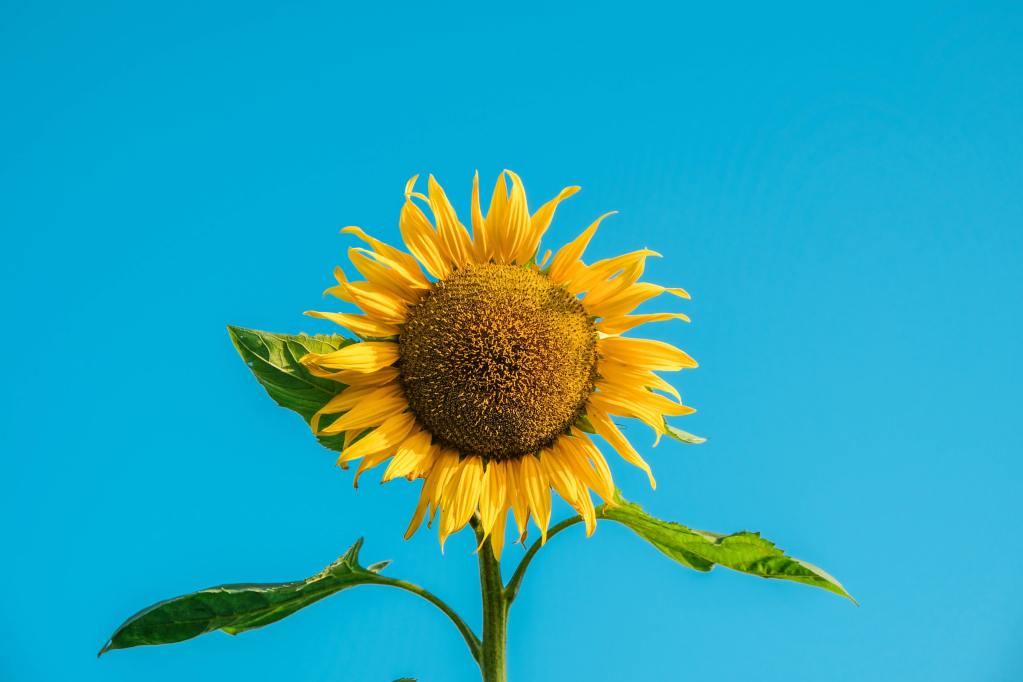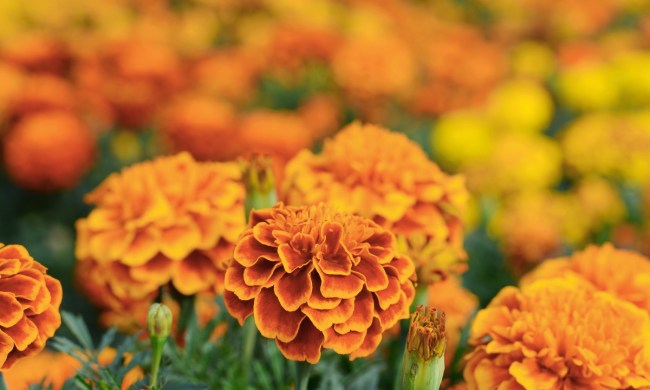
Yellow plants are gorgeous, especially when they’re bright, perky, and not on the brink of death. Yup — while the color yellow is notoriously an indicator for overwatered, sunburned, or otherwise suffering leaves, many trees, shrubs, and tropical houseplants come with naturally yellow blooms and variegations!
If you’re looking to brighten up your darkest days with a pop of golden foliage and blooms, keep reading ahead for our top yellow plant recommendations.
Winter jasmine

Winter jasmine, an elegant deciduous shrub that comes from China, flaunts fragrant yellow blooms that emerge in late winter, allowing you to enjoy flowers even when it’s not the growing season for most plants. The leaves are somewhat small, so you may notice it looking ever so slightly sparse come summertime. This plant, hardy to zones 6 through 11, does well in many environments. You can keep it in the shade and relatively poor soil but still see it flourish, whether you have it on the ground or up a trellis.
Stella daylily

The golden Stella daylily features arching grass-like leaves and beautiful star flowers that can rebloom from May through October. It grows prolifically and requires little maintenance, making it a common landscaping flower. It’s also deer and drought resistant, so you won’t need to fuss over it too often. When it comes to light, the Stella daylily prefers full sun, but it will appreciate shade on hot afternoons. When it comes to climate zones, it’s hardy in zones 3 through 10, doing well in a wide range of temperatures.
Lady’s mantle

The lady’s mantle features dainty yellow blooms and scalloped green leaves that make it a stunning landscaping plant — though it’ll also happily live in containers. It doesn’t need to be tended to very often and features a long lifespan; just make sure to clean up spent blooms and brown leaves to avoid pests. Lady’s mantle can tolerate poor soil, although you’ll definitely want to water it on hot days and keep it in partial shade to prevent leaf scorch. Most varieties of lady’s mantle are perennial in climate zones 4 through 7, where it’s grown next to trees.
Banana croton

Crotons typically feature some combination of deep green leaves with yellow, orange, and red splashes. The banana croton, however, features all-yellow variegation on its thin, upright leaves. Outside, it can become a shrub, but you can keep it relatively compact indoors. As with any croton, the banana croton prefers bright indirect light to maintain its vivid color. What you don’t want to do is leave it by a drafty heater or air conditioning unit — otherwise, its leaves may droop and fall off. Allow your plant to dry out in between waterings.
Yellow archangel

Part of the mint family, the yellow archangel flaunts delicate yellow blooms in addition to variegated leaves with silver flecks. In the shade, it spreads prolifically, which makes it a go-to plant for landscapes — note that, in some areas, it’s actually considered an invasive species. While it’s mainly used as a groundcover, it can also trail and climb in containers. Hardy in zones 4 through 9, the archangel prefers warm temperatures but partial shade, as too much sunlight can burn its fragile foliage. You won’t need to fertilize your yellow archangel, but you can add compost to your soil once during the growing season.
Golden chain tree

Hardy in zones 5 through 7, the relatively rare golden chain tree, or laburnum tree, yields golden panicles that resemble wisteria. Lovely as this plant may be, its fragrant blooms are toxic for humans and animals, so keep that in mind when you handle it. This tree can do well with partial or full sun and tolerates relatively poor soil, though it needs acidic soil in the spring. It also requires some maintenance to retain its beautiful form. When it comes to watering, water it consistently but never let the soil become overly moist. When it’s young, its leaves should also be pruned so that it can stay bushy and resist winter damage.
Sunflower

We can’t really make a list of yellow plants without mentioning the iconic sunflower, or Helianthus annuus. Hardy in zones 4 through 9, this cheerful flower doesn’t require much to thrive during the growing season. It does well in poor soil and is relatively drought tolerant. What’s non-negotiable, however, is 6 to 8 hours of full, direct sunlight per day. Since sunflowers do grow quite tall (some can even grow over 13 feet tall), you may want to secure them to a trellis or stake, especially if there’s a lot of wind afoot. When the flowers go to seed, you can collect them to plant again or even eat them.
Yellow doesn’t always have to mean troubled leaves! To match the golden hues of summer days or brighten up overcast winter weather, plant foliage that flaunts naturally yellow leaves and blooms. From the hardy winter jasmine to the bold banana croton, there’s no shortage of yellow plants for adding cheer to your garden.



